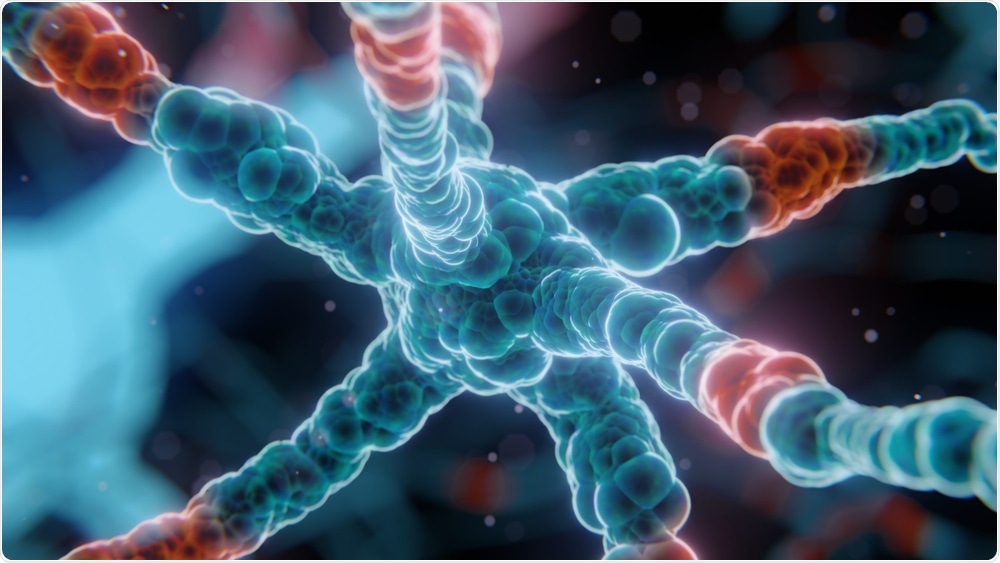A new study from the researchers at the University of Arizona has shown that multiple neurons within the brain come together to regulate the need to eat and feeling of fullness, or satiety. They explain that there is a region in the brain that can regulate these neurons and thus can regulate appetite and its suppression. This region, they add, lies within the center of the brain that controls emotion, called the amygdala.
The study was published in the latest issue of the journal Nature Communications. The study was titled, “A bed nucleus of stria terminalis microcircuit regulating inflammation-associated modulation of feeding.”
 Theodore Vojik | Shutterstock
Theodore Vojik | Shutterstock
Researchers from the University’s Department of Neuroscience first noted that appetite loss was controlled by a special region of the brain and a complex array of neurons. Lead author assistant professor Haijiang Cai, is a member of the BIO5 Institute.
Cai explained that anorexia or loss of appetite is usually triggered by inflammation in the body and when it occurs, it can affect the success of therapy. The team wrote, “A bed nucleus of stria terminalis microcircuit regulating inflammation-associated modulation of feeding.”
The team, for their study first inhibited the neurons within the amygdala of the brain that controls feeding behaviors. This was supposed to increase appetite. Similarly, they activated the neurons to decrease appetite.
By silencing the neurons within the circuit, we can effectively block feeding suppression caused by inflammation to make patients eat more. We used anorexia for simplification, but for people with obesity, we can activate those neurons to help them eat less. That's the potential impact of this kind of study.”
Haijiang Cai
“We identified a population of neurons, marked by the expression of protein kinase C-delta, in the oval region of the bed nucleus of the stria terminalis (BNST), which are activated by various inflammatory signals,” write the authors.
“Silencing of these neurons attenuates the anorexia caused by these inflammatory signals. Our results demonstrate that these neurons mediate bidirectional control of general feeding behaviors. These neurons inhibit the lateral hypothalamus-projecting neurons in the ventrolateral part of BNST to regulate feeding, receive inputs from the canonical feeding regions of the arcuate nucleus and parabrachial nucleus.”
The team noted that specific neurons called “ovBNST PKC-δ neurons” could be activated with light frequencies at different pulses. The researchers explain that anxiety could be a reason for not feeding well. To counter this they tested the light theory with the mice in their home cages when they were less anxious.
“Light was delivered within a few seconds following the onset of feeding bout. Our results showed that light activation significantly shortened the average duration of the feeding bouts in mice expressing ChR2 in ovBNST PKC-δ neurons, indicating the feeding was also suppressed in home cages.”
This proved that the neuron circuitry activation was related to the suppression of feeding behavior. To further prove the role the neurons, the team used “chemogenetic silencing of these neurons”. They concluded, “chemogenetic silencing of the ovBNST PKC-δ neurons significantly increased the total amount of food intake in both fed and fasted mice.”
This study was conducted on lab mice by modulating their neuronal behaviors to alter their feeding behavior. The team hopes that they would be able to replicate the features of the experiment in humans as well and identify the neurons in human brains that cause similar changes in appetite.
Cai explained that the whole process of food selection and eating is complex and regulated by neurons:
This circuitry we found is really exciting because it suggests that many different parts of brain regions talk to each other. We can hopefully find a way to understand how these different steps of feeding are coordinated.”
Altogether, our results demonstrated that ovBNST PKC-δ neurons play an important role in regulating inflammation-associated anorexia, mediate bidirectional control of general feeding.”
The researcher team concludes, “Our data define a BNST microcircuit that might coordinate canonical feeding centers to regulate food intake, which could offer therapeutic targets for feeding-related diseases such as anorexia and obesity.”
The research was partly funded by the Brain and Behavior Research Foundation.